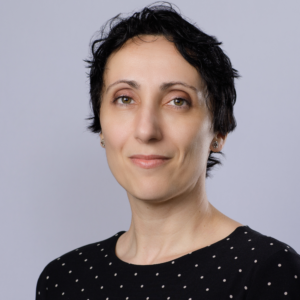By Sandra Wilder, STEM Relationship Manager for the Ohio STEM Learning Network at Battelle
From the moment I attended my very first conference, I knew that I found one of the best ways to learn and grow professionally. It turned out, however, that there was one thing better than attending a conference. Presenting at one!

I have been attending and presenting at conferences since I was a graduate student. The best sessions I have attended were the ones led by practitioners in my field. Their presentations are full of practical and relevant information, rich with stories from their classrooms, and everyone has a chance to share and learn. As a presenter, I strive to give the same experiences to my audience. The most precious thing that educators give at conferences is gift of their time, and sessions they attend should never waste a moment of it.
Preparing a session proposal, even if it doesn’t result in a presentation at a conference, is an opportunity to grow as an educator. Reflecting on a strategy, resource, or experience, and being able to communicate it in a conference proposal is a skill that is transferred to numerous situations where we, educators, often have limited time and opportunity to advocate for initiatives, funding, or programs to support our students, colleagues, and schools.
The process of designing a conference session starts with a goal for your audience.
- What do you wish they know that you have already learned?
- Why would that knowledge matter to them? How will they grow during your session?
Ohio STEM Innovation Summit now accepting presentations
The Ohio STEM Innovation Summit on June 4, 2024 will showcase innovative STEM strategies from teachers and administrators across the state. Are you ready to share your classroom-tested methods? Apply today! Presenter applications close January 22, 2024.
The next step is creating an experience for your audience. The experience you design should invoke feelings and passion for whatever message you are sharing with them.
- What is your message?
- Is it a strategy that worked for your students? Have your audience experience it as a learner!
- Is it a resource that made a difference in your lesson planning? Allow the audience a chance to explore it!
- Is it an instructional approach that reached all learners in your classroom? Have your audience analyze and discuss it!
Once you have the goals and experience defined, you are ready to put pen to paper and write your proposal.
The importance of sharing knowledge and expertise is recognized in the STEM and STEAM Designation Rubric. Educators in STEM and STEAM schools explore and effectively employ innovative and creative instructional approaches. As members of the STEM community, they are encouraged to share their lessons learned with other educators. Conferences focusing on STEM education, such as the OSLN STEM Innovation Summit, are excellent opportunities to do so!